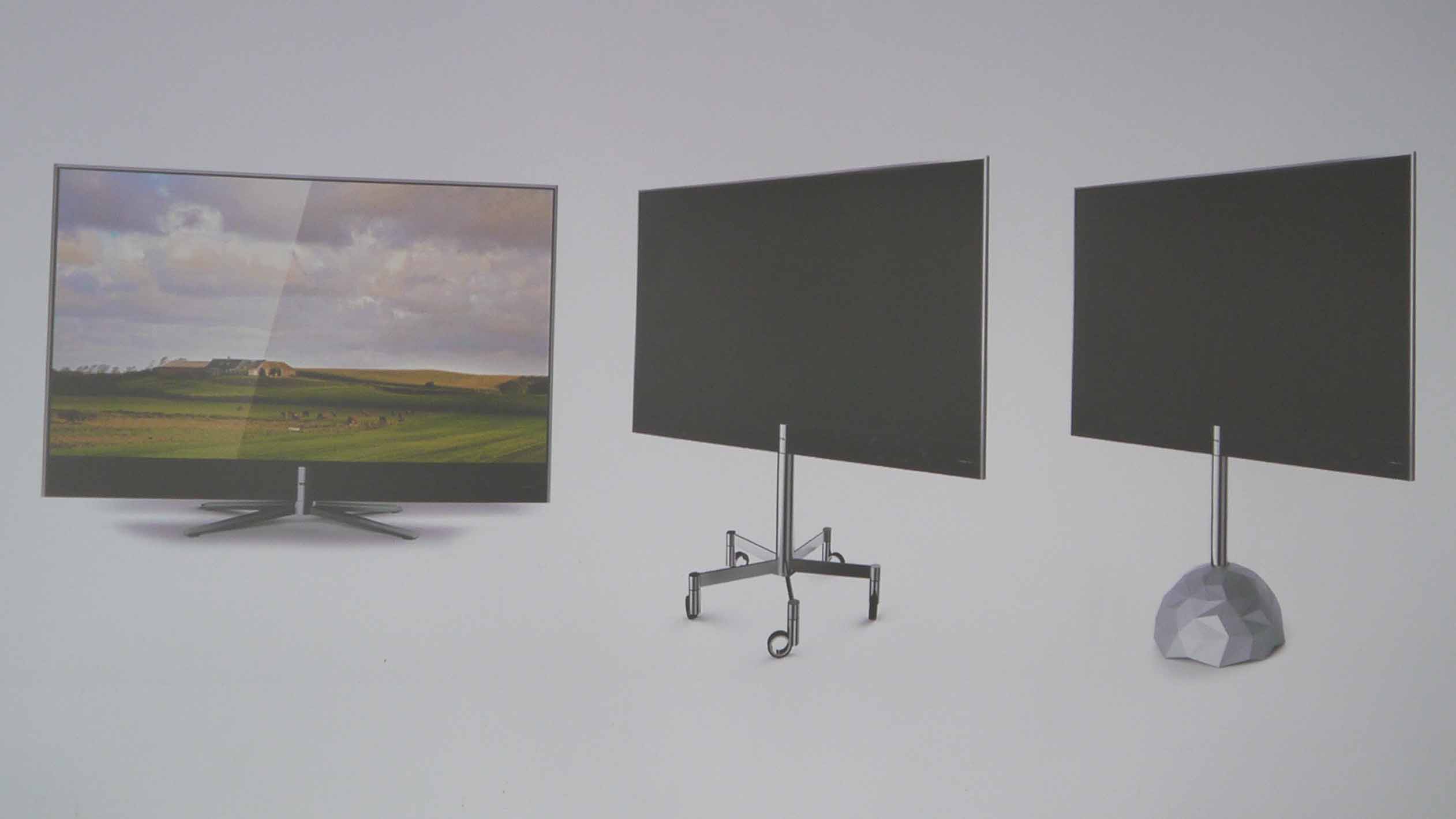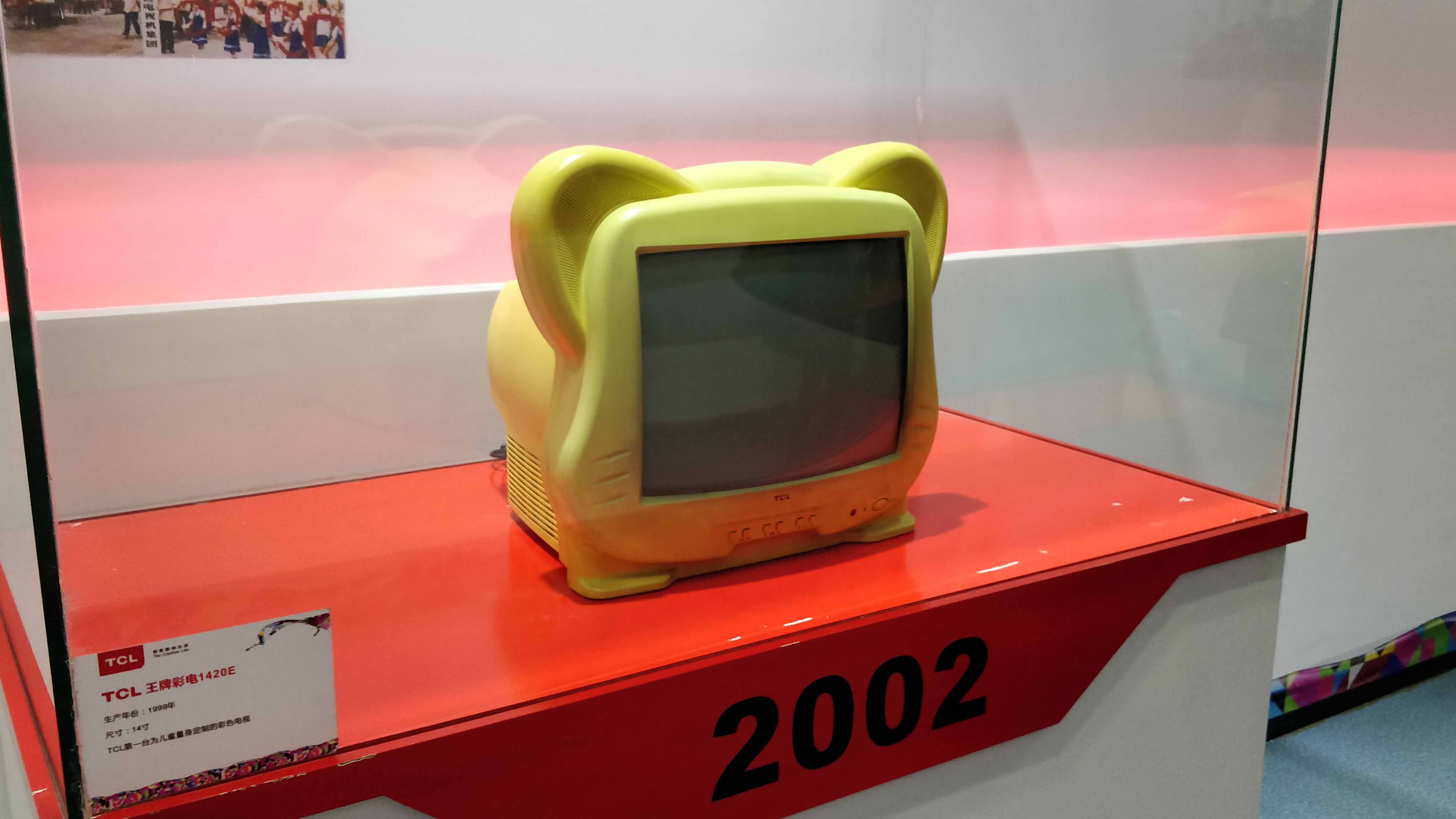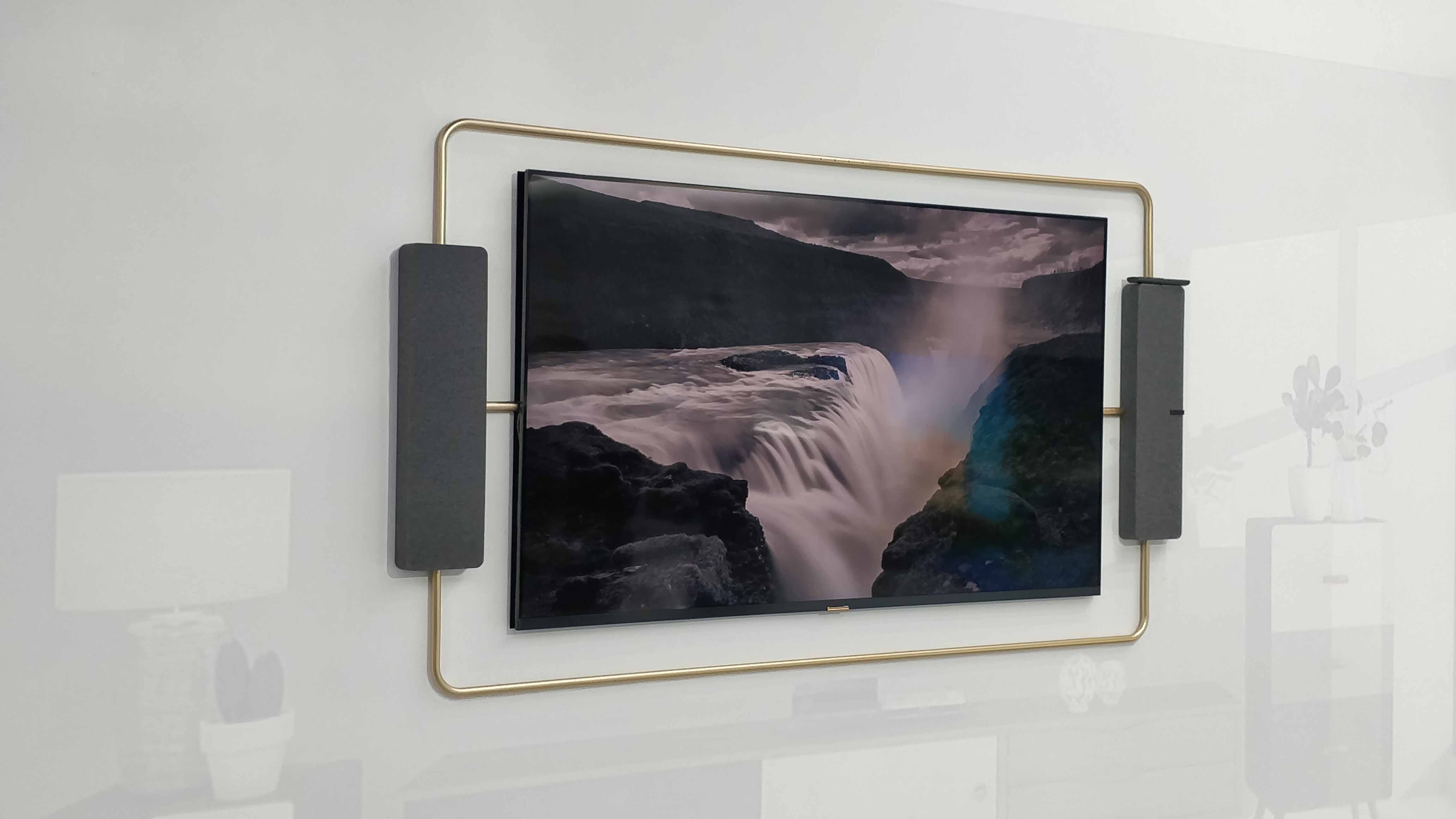TCL is making some crazy TVs – here’s why you can’t buy them
Concrete speakers, IKEA cabinets, and more

Can’t quite find a TV that feels different from the rest? We’re not surprised: while the market is packed with countless television models in a variety of sizes, from 32-inch bedroom screens to 88-inch wall-fillers, most of them tend to stick to the same basic shape, casing, and colorings.
After all, the most important part of a TV is the picture, and to a certain extent the external appearance of the television is a side dish to the main meal on offer – if you get to the end of a 90-minute Netflix movie and all you paid attention to was the TV stand, something has clearly gone wrong.
That’s not to say there aren’t some innovative TV designs out there; the problem is that most of them just aren’t going to make it to market.
Nowhere is this clearer than with TCL, a Chinese electronics company that now lists in the largest three TV manufacturers in the world alongside LG and Samsung, accounting for over 10% of global TV shipments in 2018.
Notwithstanding its global scale and mass-production focus, TCL is also exploring a number of new design possibilities for its displays that use materials and form factors a world away from what you’ll find in your local electronics store: everything from reflective smart mirrors to TVs based in concrete.
But why, for the most part, can’t you find these products in your local Walmart or John Lewis? And why would TCL bother to make TVs that, for now at least, have little chance of making it into Western showrooms?
Designing the unexpected

We spoke to TCL Electronics’ Senior Product Designer, Tiago Abreu, who has been tasked with forging the company’s design ethos over the past four years. According to Abreu, his team has “the budget for crazier concepts”, even if most of them don’t end up sitting on shelves.
One that did, however, was a collaboration with IKEA called the Uppleva TV, which was essentially a furniture cabinet with the TV and relevant ports built in. The Uppleva did sell in the UK and Europe, but disappeared pretty sharpish after buyers found that IKEA’s cheap and minimalist design philosophy didn’t translate well to picture quality. (You can still buy the Uppleva wall mount from Ikea’s website, but the TV is nowhere to be found.)
Sign up for breaking news, reviews, opinion, top tech deals, and more.
Back in 2014, TCL also showed off a seismic 110-inch curved television, named the China Star, which even today seems hugely excessive both in size and scope. At the time the largest curved television ever made, the China Star took things even further with side-mounted speakers and a subwoofer encased in concrete – yes, concrete, apparently for its “acoustic properties”. There aren’t many viewers with the space, or the inclination, to shift a giant television encased in concrete into their home, of course, and it’s no surprise that this set didn’t end up shipping to global markets.

You could argue, however, that the development of the China Star did lead to the more reasonably-sized – and concrete free – 55-inch H8800 4K TV: a similarly curved set that we called “charmingly quirky” in our 2015 review (four stars). Even the crazier concepts can end up trickling down to more commercial sets.
Often these odder, more conceptual sets will be shown off first at annual tech expos. Many commercial TVs make their debut at CES every January, which is also a chance to receive and review industry feedback well in advance of any formal launch date, but companies will often also be showing off incredible feats of TV engineering – such as Samsung’s detachable MicroLED panels, or Hisense’s super-slim Sonic One – years before anything similar makes it to market. (Abreu expresses admiration specifically for LG’s rollable OLED shown off at CES 2019 earlier this year.)
Sometimes, says Abreu, it’s “just a concept, for TCL to make a statement. We are strong at what we do, and [the concept] is so consumers believe we can do something”.
Fighting the tide

The problem with a statement television is just that: it’s a statement, rather than a viable product in its own right. Abreu puts down the difficulty of pushing experimental designs to TCL “not being strong enough in the foreign market”.
That might sound surprising given TCL’s sales figures worldwide, but TCL is still seen as an upstart challenger in global markets compared to more established players like Samsung or Panasonic, which have been in the business for decades longer.
But it’s a different story in China, which seems readier to accept more unusual TV designs than the Western market – or at least, readier to accept them from an established Chinese brand. (We’re told by TCL’s CEO, Kevin Wang, that the company’s total profit is divided roughly equally between China and RoW .)
Abreu adds: “We’re strong [in China], and that allows us to work better locally, where we can collect more data on what audiences want.”
Domestically-sold sets are more likely to feature metal bars that jut out of the wall mount, or the XESS range’s 300-degree sound – something that TCL says no other TV brand in China offers.
“I think the Chinese market is more accepting of different form factors,” says Abreu. “People here are not shy to experience new things. They want something more catchy, more flashy, more evident. It is a very rich time for designers here.”

There are signs of TCL’s more playful design ethos in products available in Western markets – such as the Quantum Dot 9700, which exposed the television’s speakers to better reflect the prominence of the audio, courtesy of Harmon Kardon. While a small touch, it still broke the usual rectangular shape of so many televisions, embodying what Abreu says is at the heart of smart design: “leveraging what you have in a striking way”.
TCL CEO Wang admits that “we show the concepts, but not all of them are released”, adding that “the US is more market-driven” and the sales strategy abroad is more about getting the numbers up, with the brand lacking the comfortable market position that would afford it the luxury of experimenting with more extroverted designs.
Pressed on the disparity between its concept TVs and what buyers actually able to buy, Wang concludes by insisting: “We’re not lying… we’re trying to build a dream.”
- New TCL TV: every set coming from the Chinese brand this year

Henry is a freelance technology journalist, and former News & Features Editor for TechRadar, where he specialized in home entertainment gadgets such as TVs, projectors, soundbars, and smart speakers. Other bylines include Edge, T3, iMore, GamesRadar, NBC News, Healthline, and The Times.